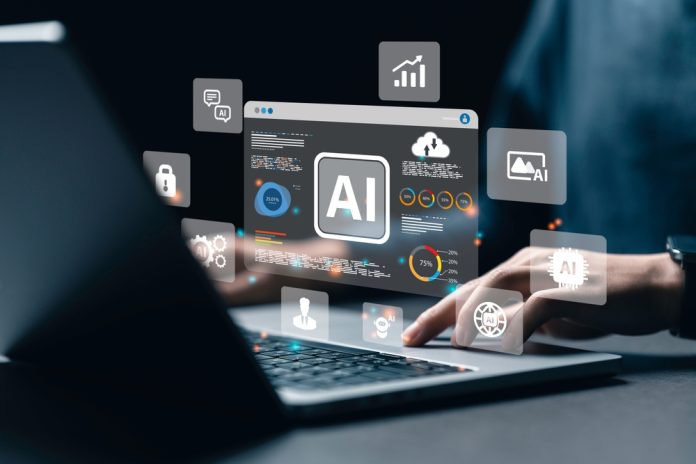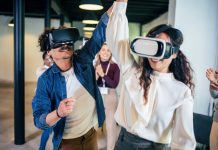
Most people today acknowledge that artificial intelligence (AI) is going to have a profound impact on the future of work. A 2023 Goldman Sachs study suggested that approximately two-thirds of current jobs will be exposed to at least some degree of AI automation. Researchers at the University of Pennsylvania reported that 80 percent of today’s workforce could have about 10 percent of their current job tasks exposed to AI, and 20 percent could have at least 50 percent of their tasks exposed. In previous technological revolutions, traditional blue-collar manual labor tasks were the most at risk, but these tasks will be less affected. Instead, jobs in information-processing industries are expected to be the most heavily impacted. That’s because AI increasingly will replace cognitive manual labor, the manual labor performed by the text-producing white-collar creative class. But what about AI as a replacement for cognitive skilled labor tasks?
How AI Systems Operate
To answer this question, we must remember that AI can only reproduce what has already been established today. That’s because artificial intelligence systems fundamentally operate based on the data and algorithms provided to them. AI models learn exclusively from existing data sets, so they can only generate outputs based on the patterns and information they previously have been exposed to through these data sets. Thus, AI’s creativity or problem-solving abilities are confined to the scope of its training materials. Let’s define those confines as what’s “inside the boundary” versus what has not been established as a result of the aggregation of existing data and algorithms and lies “outside the boundary.”
Unlike humans, AI does not possess subjective experiences, so it cannot conceive of entirely new ideas or inventions that are purely original. It doesn’t innovate in the human sense, but rather, it remixes and reinterprets the data it has been trained on. Again, that remixing lies “inside the boundary.” This also means it doesn’t handle novel situations well, especially when scenarios are not covered within the confines of the training data. And while AI can generalize from the examples it has learned to handle and to process new and similar situations, its ability to generalize is still bounded by the diversity and comprehensiveness of its training data set—again, what lies “inside the boundary.”
Understanding this Distinction in the Context of Human Capital and the Future of Work
Recent studies have examined skilled human performance of both “inside the boundary” and “outside the boundary” tasks in the context of AI with interesting findings. A study conducted by the Boston Consulting Group was one of the first to examine the impact of generative AI on professionals engaged in creative knowledge work, or “cognitive skilled labor.” Consultants were divided into two groups. One group had access to generative AI, and the other group did not. In one experiment, consultants were asked to perform several tasks linked to what I’ve defined as “inside the boundary” tasks. These included drafting a press release and writing an inspirational memo to employees, tasks which generative AI can perform quite well today. Not surprisingly, those consultants who had access to AI were more productive. They completed 12 percent more tasks and did those tasks 25 percent quicker. However, somewhat surprisingly, they also produced 40 percent higher quality results than the consultants who did not have access to AI.
However, in a different experiment, when consultants were asked to perform tasks “outside the boundary,” tasks where the generative AI could offer less value because of its bounded training set, the group with access to AI performed worse. In this experiment, consultants were asked to make a product decision based on an analysis of qualitative and quantitative data. The assistance of generative AI actually hindered rather than helped the consultants’ performance. Consultants with no AI access actually got the correct solution 84 percent of the time, while consultants with access to AI got the right answer only 65 percent of the time. The task in this experiment required the application of creative thinking, critical thinking, and judgment, more “outside the boundary” than “inside the boundary” because of the requirement for original thinking applied to data the AI had not been trained on. The researchers suggested that the consultants who had access to AI may have relied too heavily on the technology, neglecting to apply their own original thinking and creative analysis to the problem.
This is important to consider because the data from these experiments makes a few things clear. Today, we can be certain that humans who leverage AI will replace humans who fail to do so. We observe the objective benefit in both the productivity and quality of their work. But it is also true that humans who leverage AI and who possess critical power skills needed in the age of AI will excel over humans with AI who fail to maintain these skills. In other words, it’s not good enough to be a human power user of AI. The strongest performing human capital in the age of AI will be those individuals who leverage AI and possess stronger-than-average AI-era power skills.
What Are These AI-Era Power Skills?
I’ve written previously about the top five power skills in the age of AI: social interaction skills, creativity, critical thinking, curiosity, and ethical decision-making. To continue to have a compelling value proposition in the AI-era workplace, individuals who perform creative knowledge work, or the vast majority of white-collar workers—including writers, marketers, consultants, researchers, managers, and lawyers, to name a few—need to master more than the effective use of AI technology but also the five key power skills. And organizations must explicitly hire them and train them in their workforces.
AI’s Impact on the Future of Work
It’s essential to put the AI resolution in context to consider its impact on the future of work. Let’s look at patterns in previous technological revolutions and their effects on human capital and work. They all share that they did not eliminate the need for human labor. Instead, they transformed the nature of the work done by humans. Instead, automation and technological advancements create new human tasks where labor retains its unique competitive advantage over the latest technology.
The AI technological revolution will be no different. What those new AI-age tasks will require of today’s human capital creates the demand for the five critical power skills. The challenge for organizations then becomes hiring for and developing these essential skills of power across the workforce. Most organizations are simply not doing enough to change their hiring and training practices to ensure they have an enduring competitive advantage in their human capital. After all, regardless of technological change, human capital is often the only lasting competitive edge that most companies can genuinely rely on.




